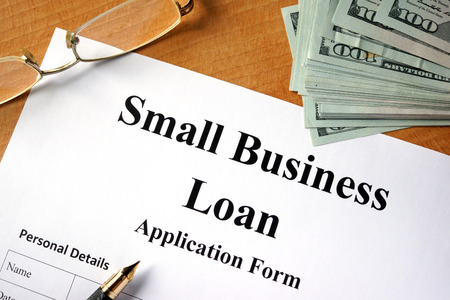The SBA Loan Approval Process and Time Frames “It’s not your parents’ SBA!” The U.S. Small Business Administration has been supporting small business owners in the United States since its inception in 1953. Its lead program, the SBA 7(a) government-guaranteed loan program, is one that has evolved into a very efficient and consistent process for loan approvals among participating SBA lenders. The most important factor to understand is that the SBA loan approval process is now a very refined template for underwriting the loan risk and loan approval decision. That means the SBA 7(a) loan approval process and time frames can now be the same, if not more efficient, than conventional bank or nonbank small business financing.
What is the SBA Loan Program? There are some popular stories about the inefficiency of federal government, but the time-tested SBA government-guaranteed small business loan program is not one of them. Instead, this program has generated measurable economic stimulus objectives, including favorable job growth, since its inception. The loan program has evolved into an indirect loan program whereby the small business loan recipient receives loan funds from participating banks, credit unions and licensed SBA nonbank lenders, instead of receiving loan funds directly from the government. The U.S. Government typically guarantees 75% of that loan against loss for the participating lender in good standing with the SBA. Experienced SBA lenders earn the PLP or “Preferred Lender” designation from the SBA, and they are able to approve SBA loan applications on behalf of the SBA without government intervention in the credit approval process. The program works well, and I, as a small business lending professional since 1980, believe the program fills a necessary gap in credit availability for small businesses in the United States.
First Steps The first step in the loan approval process involves meeting your SBA lender and giving them enough information to evaluate your loan request for a pre-approval letter. The small business owner wants to know the loan terms he can qualify for before accepting an offer by the SBA lender. The SBA lender wants to know that the small business will accept and benefit from these loan terms before conducting the complete underwriting process and preparing the SBA loan application package for the borrower. Usually the borrower’s acceptance of the terms includes paying a deposit to the lender sufficient to cover the cost of underwriting if the applicant does not go through with the transaction, after the lender has completed all the work and is ready to close the loan. In most SBA lending shops which have the SBA Preferred Lender designation, an applicant can expect preapproval and a loan proposal letter within a week or two of submitting all the information required by the lender, including but not limited to:
Personal and business financial statements Last three years personal and business tax returns. Completed loan application describing the loan request and itemizing the use of loan proceeds Signed authorization for credit and background investigation Management resumes from owners and primary managers
What Next? The borrower should allow approximately two weeks for the next step in the process which is the formal underwriting procedure by the lender. The formal underwriting procedures involve assembling data from the borrower to prepare write-ups and analysis for the following five categories:
Repayment ability – analysis of business and personal cash flow streams Management experience – evaluation of the owners’ expertise, experience and education sufficient for being successful with the business Equity – determination that the borrower’s level of personal cash investment is reasonably balanced against the debt provided by the lender and other small business creditors Credit – determination that the borrowing company and its owners have been reasonably responsible paying other creditors Collateral – determining that the level of collateral provided by the borrower is sufficient for SBA guidelines and the lender’s appetite for risk
After formal underwriting is completed, a firm commitment letter will be offered by the lender for acceptance by the future borrower. Upon acceptance, the loan closing process begins.
The Loan Closing Process The loan closing process is preparing for the day when the borrower signs loan documents and the lender funds the loan for the borrower. Every small business and SBA loan application will have a long list of closing and funding requirements for the borrower and lender, including, but not limited to, the following:
A “note” or “promise to pay” will be signed by the borrower. The note will include the terms of the loan including the origination date, the amount of the loan, the interest rate, the maturity date, and the collateral.
Security documents include all those documents required to be signed and filed with various governmental entities to perfect a lien on the collateral for the lender. Insurance documents include those with which the lender insures the title to property, insures collateral, insures the lives and ability to work of the borrowers, etc. Various SBA documents will include a complete SBA loan application package with the lender’s underwriting and the borrower’s authorization for background and credit checks. Reports from third party professionals such as real estate, business, and equipment appraisers, environmental assessment engineers, governmental permits, etc.
Depending upon how long the lender is waiting for third party reports, the closing process can usually be accomplished in one to three weeks.
Written by: Bruce Hurta, VP – Business Lending
Members Choice Credit Union Small Business Lending
281-384-2595 mobile | 281-754-1112 direct | www.BruceOnBusinessLending.com

